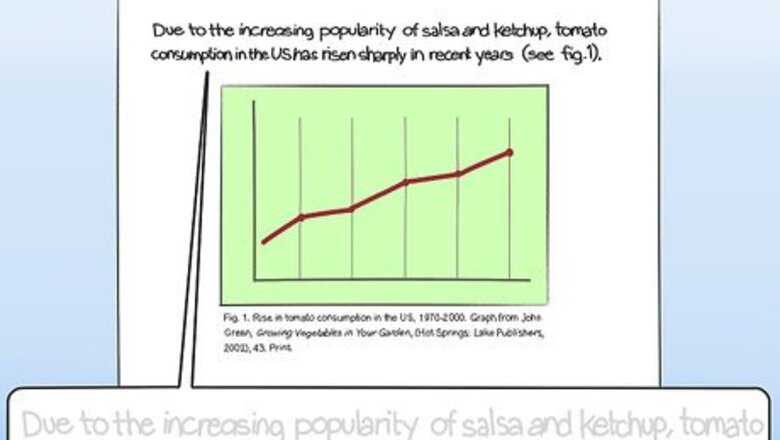
views
Citing a Graph in MLA Style
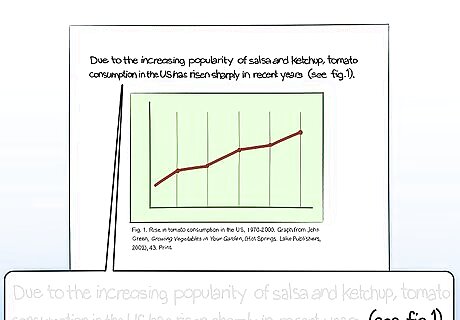
Refer to the graph in your text. When referring to a graph in your writing, use either "figure X" or "fig.X" in parentheses. Use the Arabic numeral, and don't capitalize either "figure" or the abbreviation "fig." For example, you might refer to a graph showing tomato consumption patterns this way: "Due to the increasing popularity of salsa and ketchup, tomato consumption in the US has risen sharply in recent years (see fig. 1)."
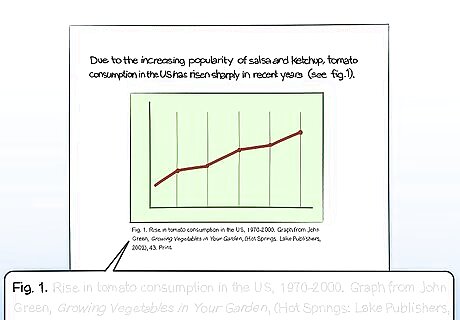
Place the caption underneath the graph. A graph or chart from another source is first labeled as “Figure X,” though you may opt to abbreviate "Figure" to "Fig." You should capitalize "Figure" or "Fig." in the caption. Figures should be numbered in the order they appear; your first graph or other illustration is "Fig. 1," your second "Fig. 2," and so on. Do not italicize the word “Figure” or “Fig.” or the numeral.
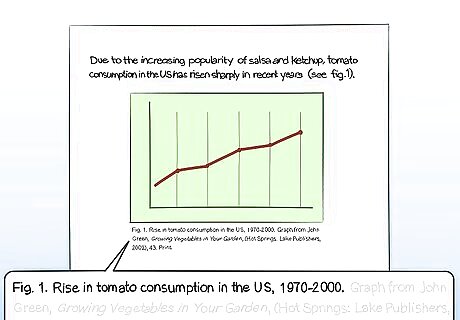
Provide a brief description of the graph. This description should provide a clear and concise explanation of what's shown in the graph. For example, “Fig. 1. Rise in tomato consumption in the US, 1970-2000...”
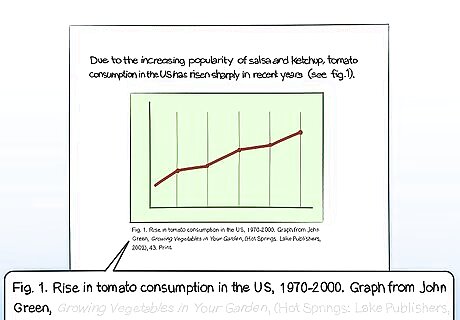
List the author's name. Note that in contrast to MLA bibliographic citations, you will begin with the author's first name: "John Green" instead of "Green, John." If the author is an institution, such as USDA, give the institution’s name instead. You need to add the words “Graph from” if the graph is not your original material. “Fig. 1. Rise in tomato consumption in the US, 1970-2000. Graph from John Green...”
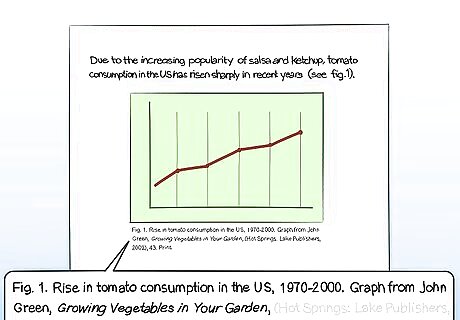
Provide the title of the book or other resource. The title should be formatted in italic text. Give the title directly after the comma following the author’s name: "John Green, Growing Vegetables in Your Backyard,..." You also italicize the title of a website, such as this: Graph from State Fact Sheets...
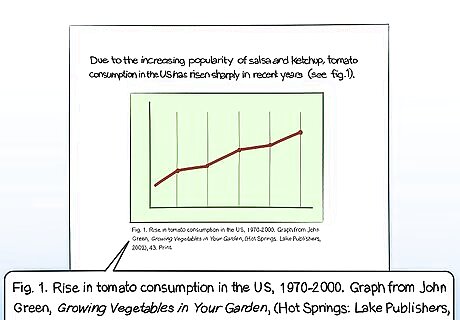
Include the book's location, publisher, and year inside parentheses. Follow the model of location: publisher, year): for example, (Hot Springs: Lake Publishers, 2002). After the closing parenthesis, type another comma. “Fig. 1. Rise in tomato consumption in the US, 1970-2000. Graph from John Green, Growing Vegetables in Your Backyard', (Hot Springs: Lake Publishers, 2002). If the graph came from an online source, follow the MLA guidelines for citing an online source: give the website name, publisher, date of publication, media, date of access, and pagination (if any -- if not, type “n. pag.”). For example, if your graph came from the USDA website, your citation would look like this: “Fig. 1. Rise in tomato consumption in the US, 1970-2000. Graph from State Fact Sheets. USDA. 1 Jan 2015. Web. 4 Feb. 2015. n. pag.”
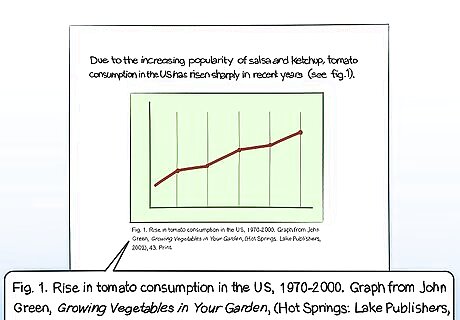
Finish with a page number and the resource format. Type a period following the page number, then indicate this book's format (i.e. "Print," "eBook," etc.) Now you're done! Your complete citation should appear as follows: Fig. 1. Rise in tomato consumption in the US, 1970-2000. Graph from John Green, Growing Vegetables in Your Garden, (Hot Springs: Lake Publishers, 2002), 43. Print." If you give the complete citation information in the caption, you do not need to also include it in your Works Cited page.
Citing a Graph in APA Format
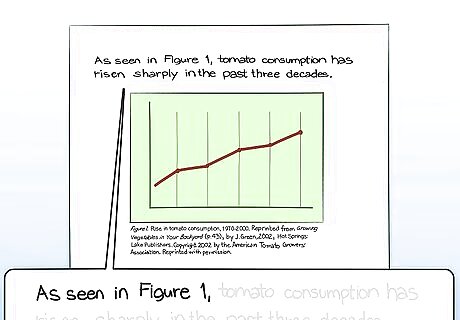
Refer to the figure in your text. You should not include any figure that you don’t mention in the text. Always refer to the figure by its number, not wording such as “the figure above” or “the figure below.” For example, you could write: “As seen in Figure 1, tomato consumption has risen sharply in the past three decades.”
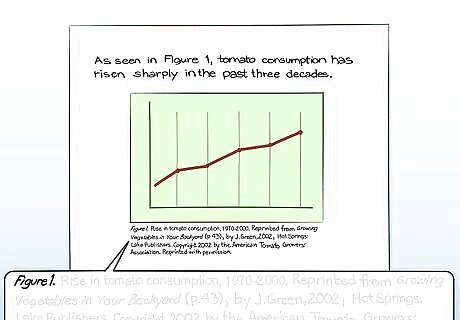
Place the citation underneath the graph. Label the graph or chart “Figure X.” Italicize this part. Figures should be numbered in the order they appear; your first graph or other illustration is Figure 1, the second is Figure 2, etc. If the graph has an existing title, give it in “sentence case.” This means you only capitalize the first letter of the first word in the sentence, as well as the first letter after a colon.
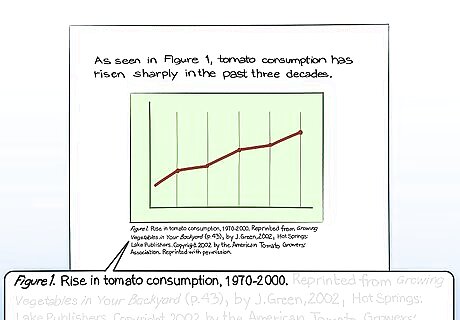
Provide a brief description of the graph. This description, or legend, provides your reader with information regarding the graph's content. Make sure you give enough information that the caption describes the figure adequately. In APA, this description ends with a period. For example: Figure 1. Rise in tomato consumption,1970-2000. Use sentence case for the description too.
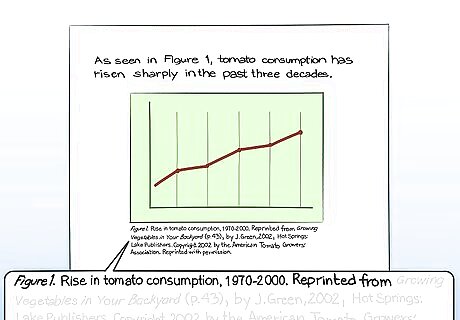
Begin your citation information. In most cases, you will begin this information with the words "Reprinted [or adapted] from..." This will signal to your reader that the graph is not original to your work, but rather comes from a different source. If the graph you’re presenting is your original work, meaning you collected all the data and compiled it yourself, you don’t need this phrase. For example: Figure 1. Rise in tomato consumption,1970-2000. Reprinted from...
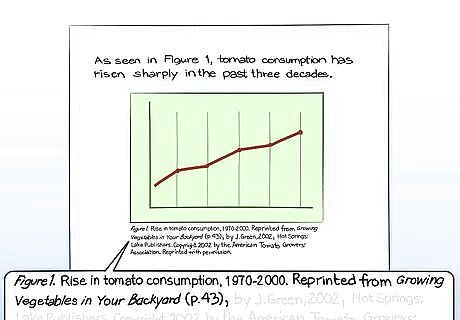
List the volume's name, then the page number in parentheses. Place book titles in italics, and cite the relevant page number in parentheses immediately following the title with no punctuation in between. Use title case for books and journal titles, meaning you capitalize all the major words in the title. For example: Figure 1. Rise in tomato consumption,1970-2000. Reprinted from Growing Vegetables in Your Backyard (p. 43),

Follow with author, date of publication, location, and publisher. This information should follow the format of "by first initial(s) last name, date, location: publisher." For example, "J. Green, 2002, Hot Springs: Lake Publishers." For example: Figure 1. Rise in tomato consumption,1970-2000. Reprinted from Growing Vegetables in Your Backyard (p. 43), by J. Green, 2002, Hot Springs: Lake Publishers.
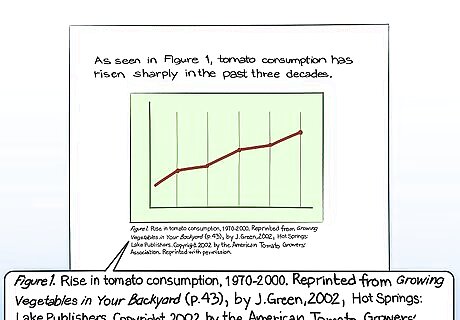
End with copyright information for the graph if you plan to publish the paper. For example, if rights to the graph in question are held by the American Tomato Growers' Association, you'll need to contact this organization for permission to use the graph. Then, state in your caption that the graph is "Copyright 2002 by the American Tomato Growers' Association. Reprinted with permission." Your complete citation, then, will read: Figure 1. Rise in tomato consumption, 1970-2000. Reprinted from Growing Vegetables in Your Backyard (p. 43), by J. Green, 2002, Hot Springs: Lake Publishers. Copyright 2002 by the American Tomato Growers' Association. Reprinted with permission.
Citing a Graph Using Chicago/Turabian Standards
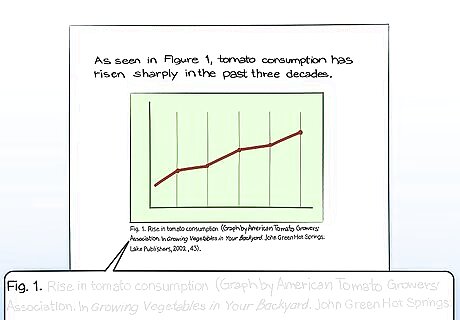
Place the citation underneath the graph. A graph or chart from another source is first labeled as “Figure X,” though you may opt to abbreviate "Figure" to "Fig." Use Arabic numerals (i.e., 1, 2, 3, etc.). Figures should be numbered in the order they appear; your first graph or other illustration is "Fig. 1," your second "Fig. 2," and so on.

Provide a brief description of the graph. This description serves as the title of the figure and provides your reader with information regarding the graph's content. Refrain from adding punctuation following the description -- the rest of your citation information will be placed in parentheses immediately following. For example, “Fig. 1. Rise in tomato consumption..."
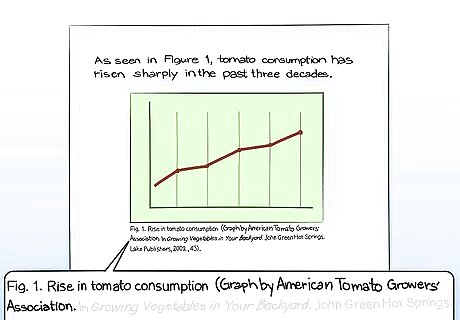
List the graph's author, if available. For example, in our example you might write "Graph by American Tomato Growers' Association."
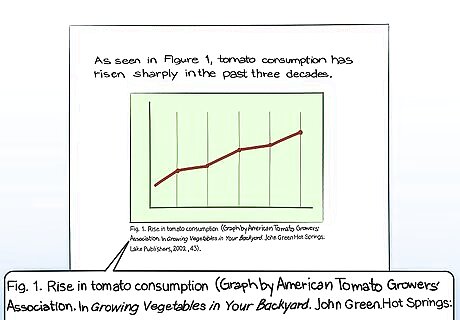
Place remaining citation information in parentheses. Follow a format of "In Book Title. By author. Location: publisher, date, page number." Your complete citation should read: Fig. 1. Rise in tomato consumption (Graph by American Tomato Growers' Association. In Growing Vegetables in Your Backyard. John Green. Hot Springs: Lake Publishers, 2002, 43).
Citing a Graph in IEEE Format
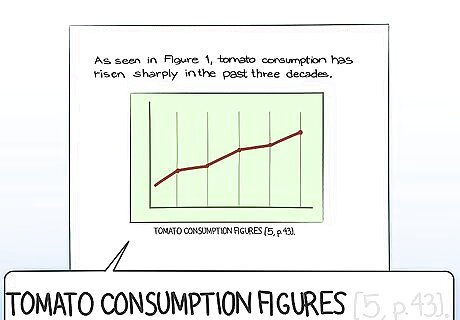
Provide a title for the graph. This title should be written in capital letters. For example, "TOMATO CONSUMPTION FIGURES."

List the source's citation number. In IEEE citations each source is numbered in ascending order as the source is introduced in your writing. You'll then refer back to the source number whenever you mention that source. If this marks the first time you've used this source, assign it a new number. If you've already used this source, refer back to the original source number. In our example, let's say this is the fifth source used in your paper. Your citation, then, will begin with a bracket and then "5": "[5..."
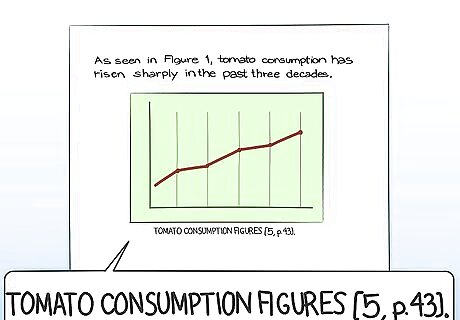
Provide the page number where you found the graph. This concludes the information you'll provide in the body of your paper. Your complete citation, then, will look like this: TOMATO CONSUMPTION FIGURES [5, p. 43]. Be sure to list complete source information in your endnotes.




















Comments
0 comment